
Published Issue 139, July 139
San Francisco local Eric Joyner is a lifelong master artist known for his fantastical dreamscapes where wires meet wonders. His journey from drawing in kindergarten to working in commercial design post art school propelled him to the independent artist that he is today. And most importantly, his signature subject — robots and donuts.
Though he paints what entertains him, part of his mission is to spread joy to others and provide an oasis with his works through a lens of comedy, fantasy and absurdity, which people of all walks crave, even J.J. Abrams and George Lucas who are fans and collectors. But at the core of these whimsical robots, sweet baked goods, iconic monsters and nostalgic characters is the essence of what it means to be human — our search for belonging, for being understood, our inherent desire to find meaning in life as we know it. And Eric reminds us that perhaps the answers are closer than we think. Perhaps they can be found in the absurd relationship of a robot and a donut.
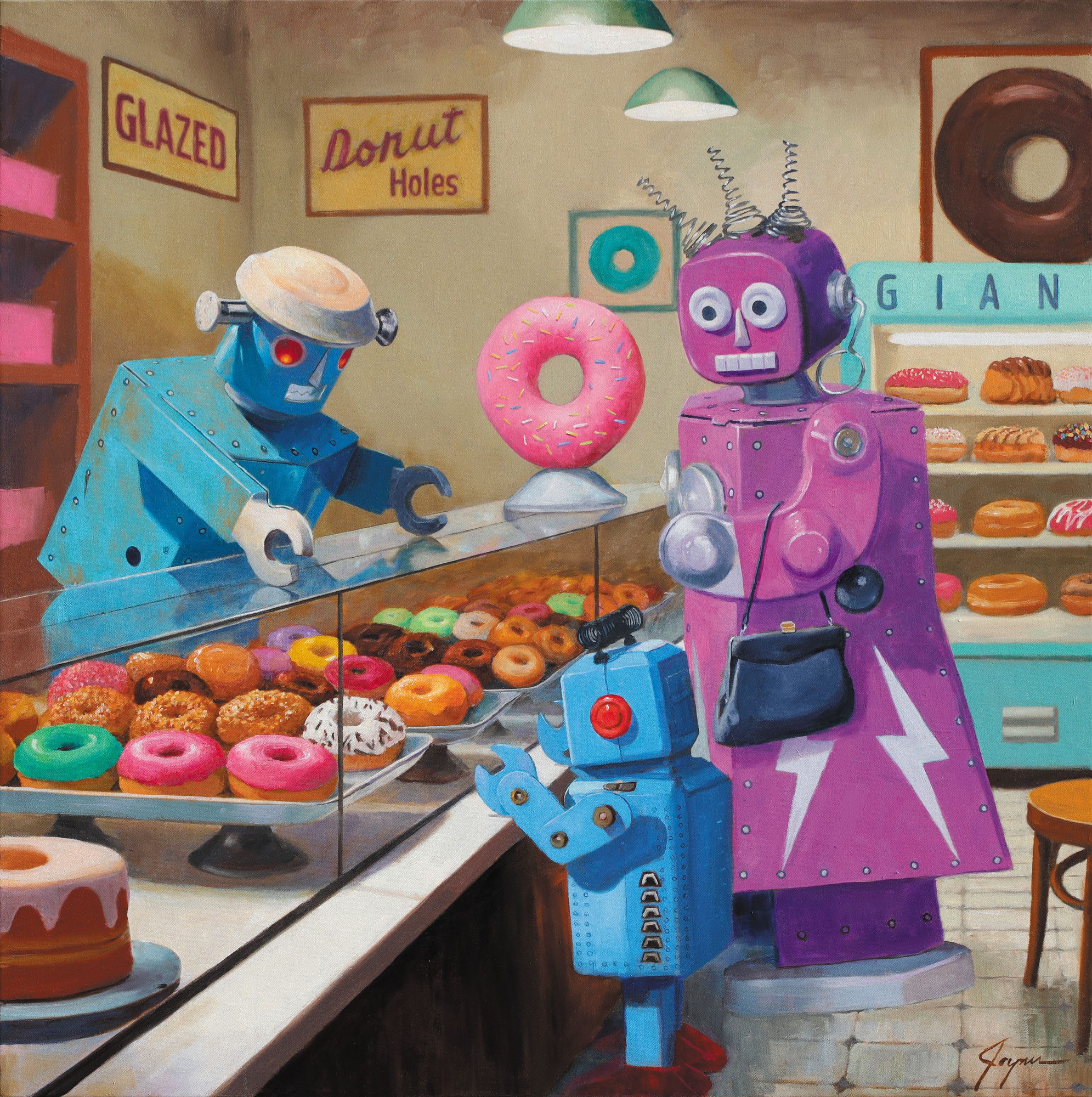
Absurdity is a fundamental aspect in your art. Why is it so significant to your life and work?
I guess because I am the product of a highly dysfunctional family. As I grew up with a lot of fear and disgust, not getting much instruction, counsel or guidance. My absurd attitude towards life was thus born.
Take us back to the Vincent Van Gogh exhibition in San Francisco that deeply inspired and transformed you as a child and set you on your artistic path.
Yes, that show really opened my little brain. I was struck by the colors and brushstrokes, of course. Like so many other writers and artists, it was inspiring.

In 1999, you lost the fear of your art looking stupid and that’s when your work leveled up and took off. What sparked this realization?
This realization was sparked by researching what was out there in the art world. I read a lot of art magazines and gallery websites, read biographies by Brian Eno and Andy Warhol as well a good amount of Charles Bukowski.
Robots and donuts was born out of an epiphany you had in the early 2000s after experiencing artistic boredom burnout. How do you keep your inspirational fire stoked over two decades later and prevent disenchantment with your subject matter?
I make sure there’s a small amount of something different, in terms of subject matter or the influence of a movie genre. Also certain machines, settings or desserts.
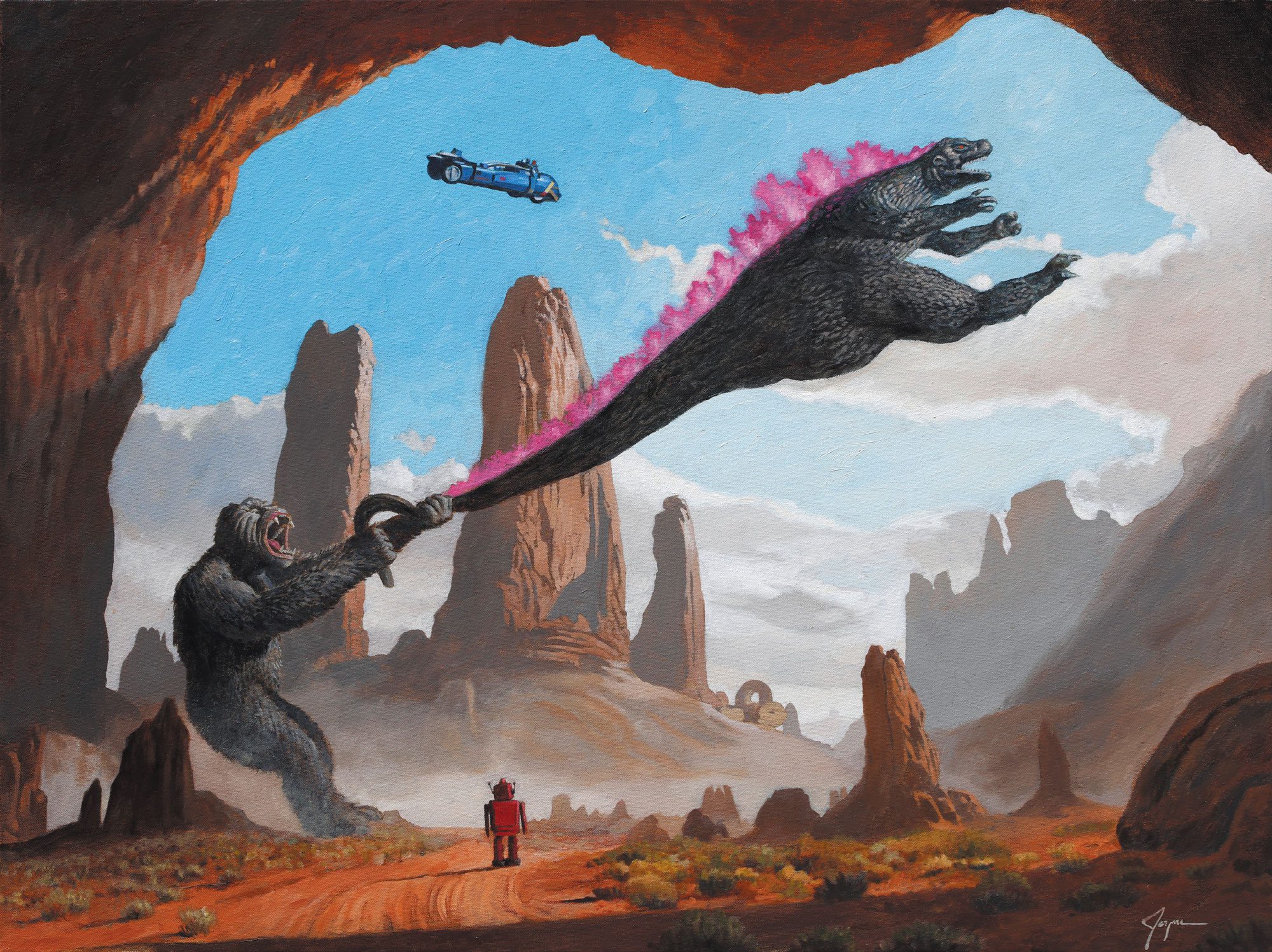
How do you start your day to get into the zone of making art?
I first exercise and deal with correspondence and administration. Then set to creating. The hardest part is getting started but it gets easier quickly and the anxiety goes away.
As a full-time artist, you spend hours on end alone in the studio. How do you keep yourself company and also balanced?
I listen to music and listen to YouTube. Sometimes audio books. There is no balance. I try to get exercise every day.
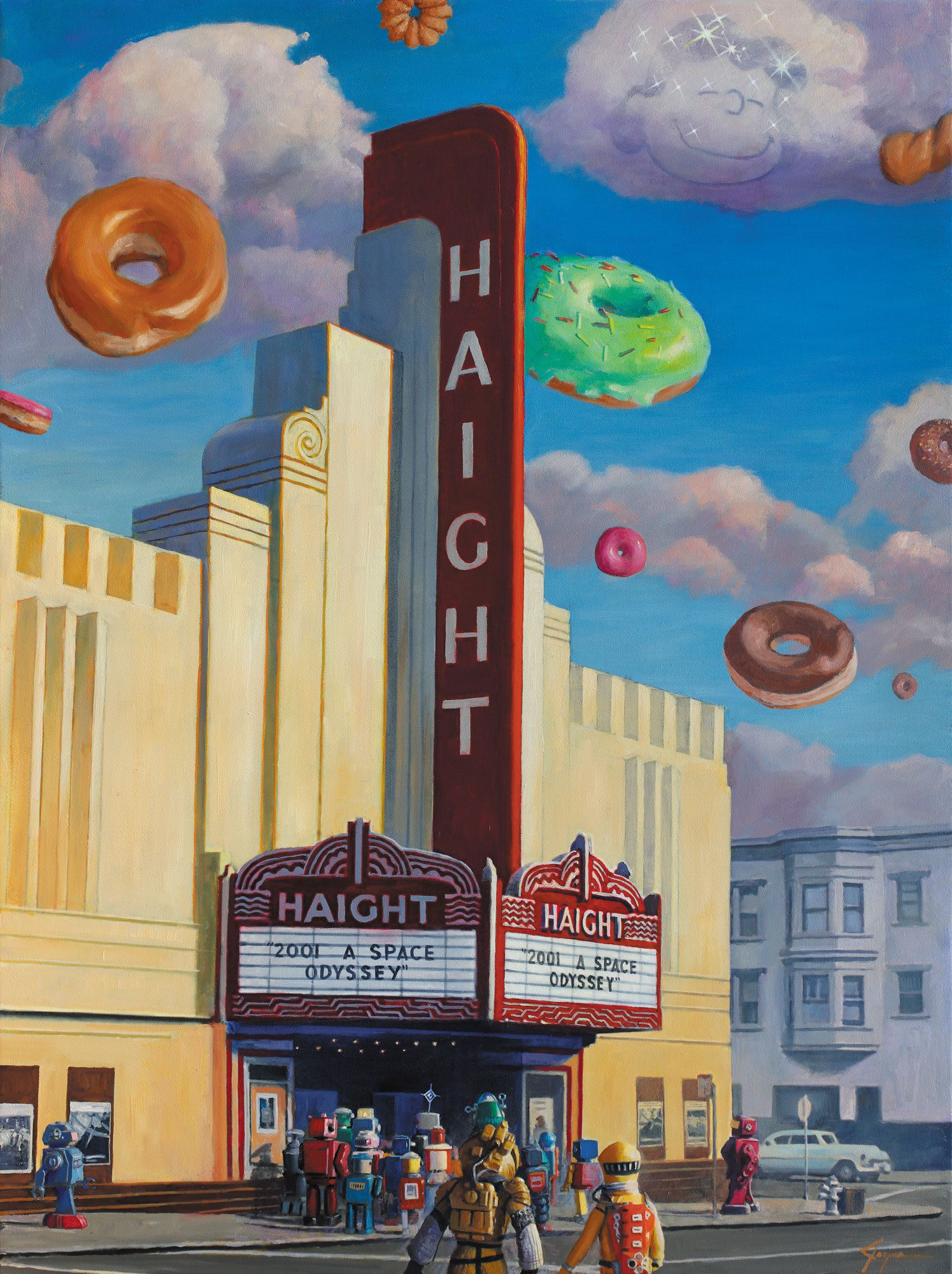
Your paintings are so rich in detail I’m curious how long one typically takes to complete. And do you work on multiple pieces at once or are you a one project at a time creator?
The time involved for each painting ranges from two days to four months, depending of the size and complexity. More robots and larger paintings equal more time. I usually have three paintings going at once while thinking of others.
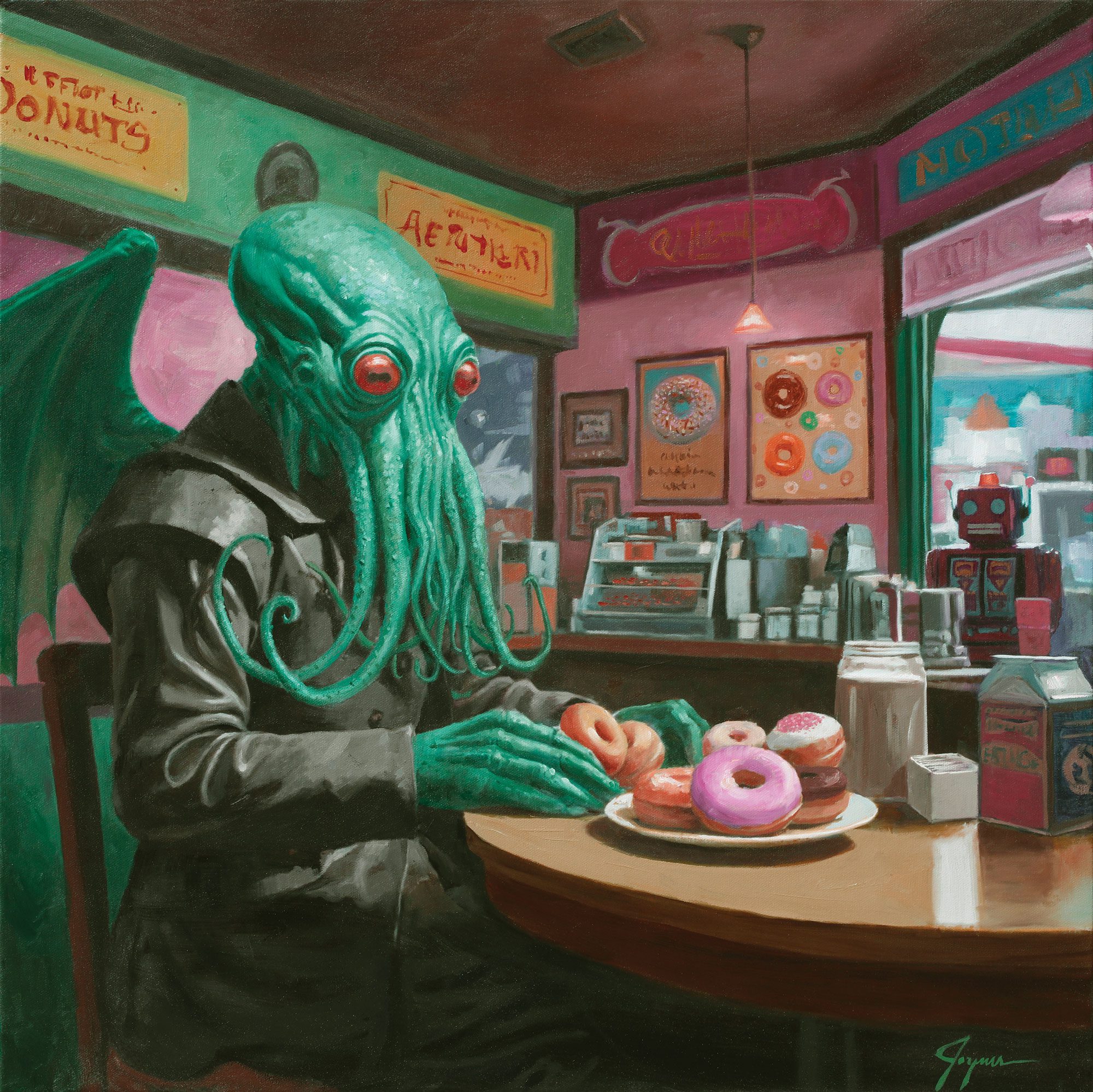
You work with recurring themes and what’s grabbing your attention at the moment in culture, movies, historical events, nature and space. What’s grasping your attention this year?
This year’s theme is much of the same as past years but I have thrown King Kong, Barbi, Cthulhu and ice cream into the mix.
You’re deeply inspired by traveling and being out in nature. Recall a trip that transformed you. On a day-to-day basis, what are your go-to nature getaways in San Francisco?
The most transforming trip was probably when I was 9 when I, my father and two brothers hiked down a mountainside to the Middle Fork of the Yuba River in California. An exhausting and near-death experience. My days are no longer filled with many nature adventures but I do get to look across the San Francisco Bay every day from my art studio.
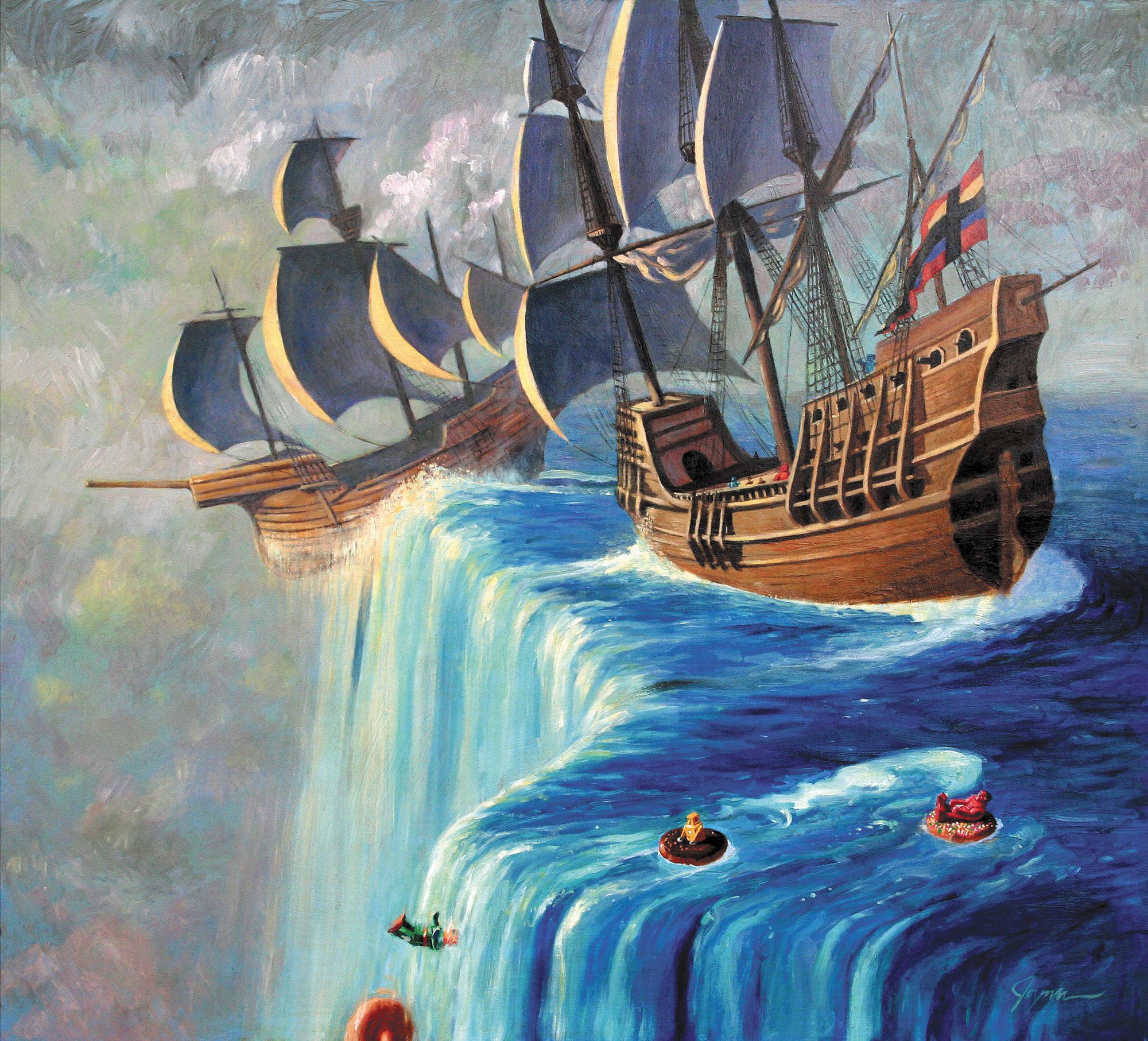
What is the key to being a lifelong artist?
A person will need to have persistence, desire, adaptability, resilience — in the face of many setbacks, sacrifice — an open mind and a good work ethic. He/she will need to write down their dreams, aspirations and have a plan with goals and deadlines. A pragmatic approach. Few people make a strong career right away. I think of it as a marathon.
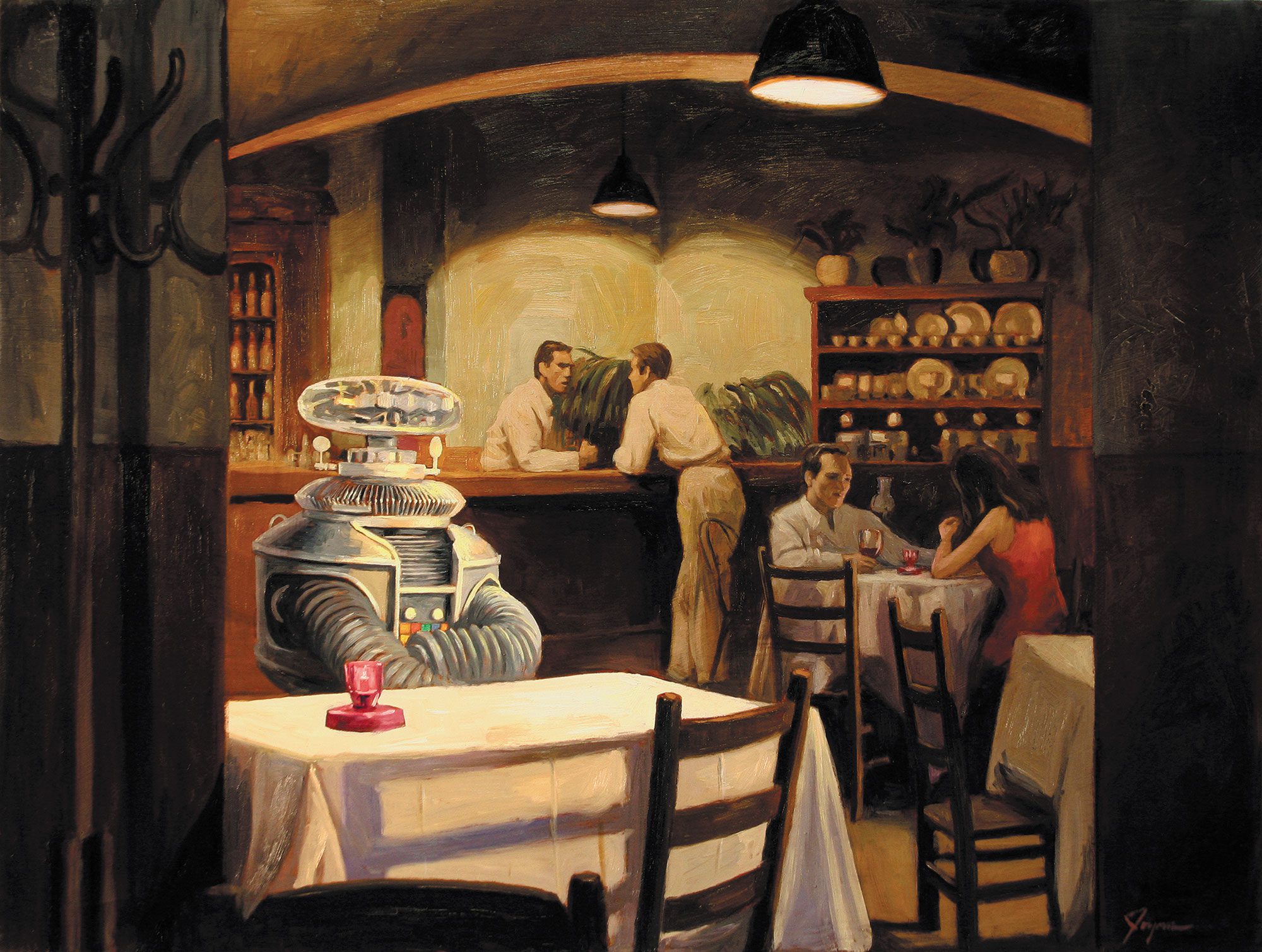
Though your work is chock-full of comedy and lightheartedness, it’s dually deeply emotional and complex, showcasing humanized characters expressing an array of feelings and physical states — even with your faceless baked goods. Is your work at all autobiographical or does it lean more heavily on fiction?
Thank you. A combination of the two, I would say. My oil paintings are dreamscapes where robots and donuts coexist in strange harmony — symbols of indulgence, routine, and the absurdity of modern life. Rooted in pop surrealism, these works unfold in familiar yet slightly askew environments — bakeries, sidewalks, and quiet corners of imagined cities — where machines begin to echo the gestures and emotional rhythms of the people who made them.
The robots in my paintings are not cold or clinical. They fumble toward something human — seeking comfort, connection, distraction — mirroring our own attempts to find meaning in a world growing increasingly fragmented. Donuts appear as both coping mechanisms and existential props: absurd, sweet and fleeting, much like the comforts we cling to in the face of uncertainty.
These scenes often straddle the line between melancholy and humor, realism and fantasy, inviting viewers to consider the surreal logic of dreams as a lens for understanding our daily lives. The works ask philosophical questions with a light touch: What happens when artificial beings start dreaming? What does it mean to be conscious in a programmed world? Can absurdity be a kind of salvation?
As we teeter on the edge of a murky future shaped by artificial intelligence, these paintings become reflections of our collective anxieties and quiet hopes. They suggest that perhaps even in a world of circuits and code, the desire for tenderness, joy and a donut remains universal.
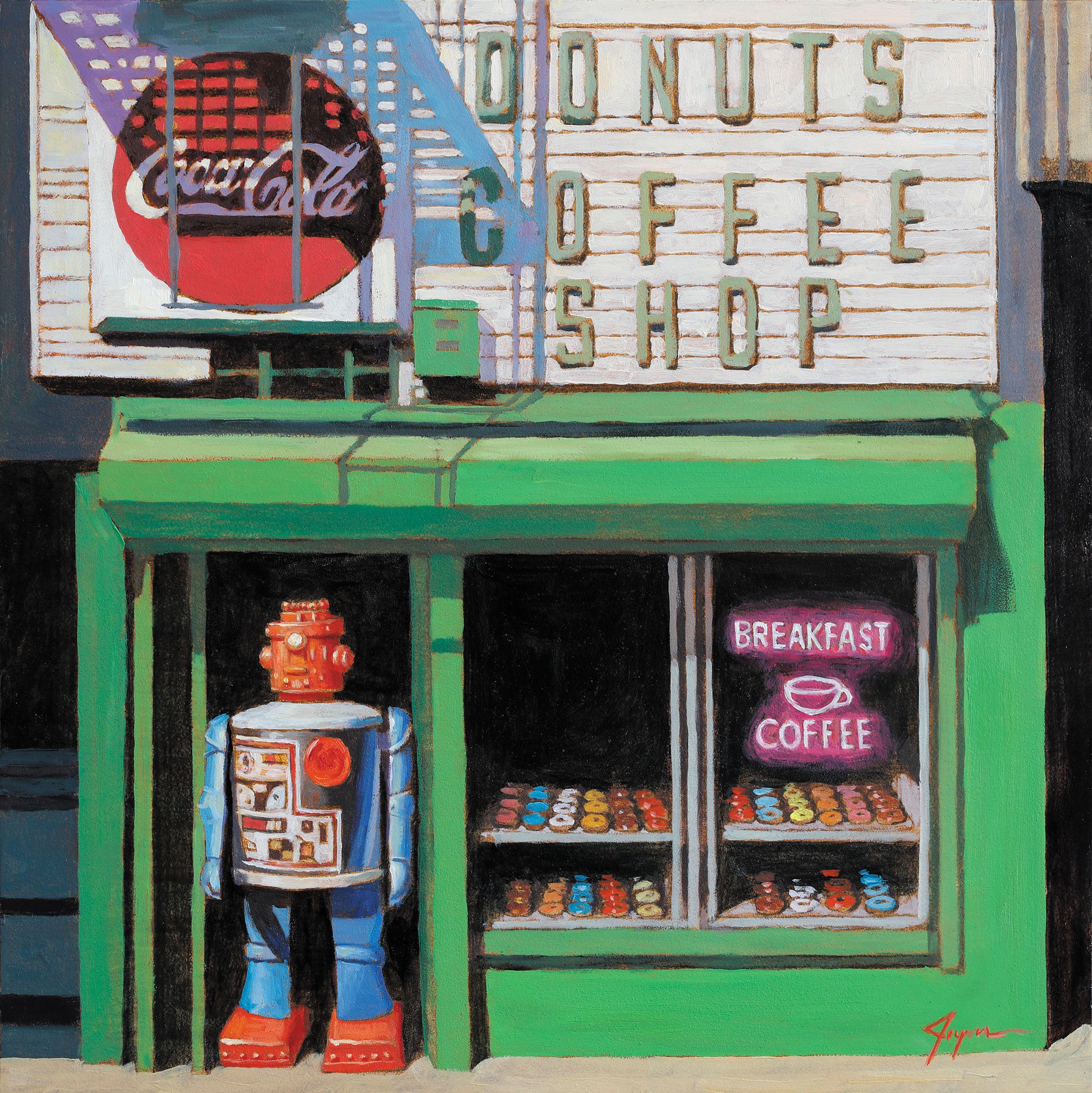
As robot painter, what are your thoughts on the intersection of AI and art?
Caution, fear and excitement. There are a lot of reasons to be concerned about our future. But since there is nothing I can do about it, I don’t let it get me down. It looks like we will be going through some fundamental changes in the coming years. Who knows — maybe things will improve.
Favorite and least favorite aspect of making art.
Favorite part is coming up with the initial idea, or the final brushstroke. Least favorite part is the preliminary work consisting of research and work.
A major donut company asks you to come up with a special seasonal donut. What do you create?
A basic raised or yeast donut with chocolate and orange sprinkles, for Halloween. Not too many sprinkles though.
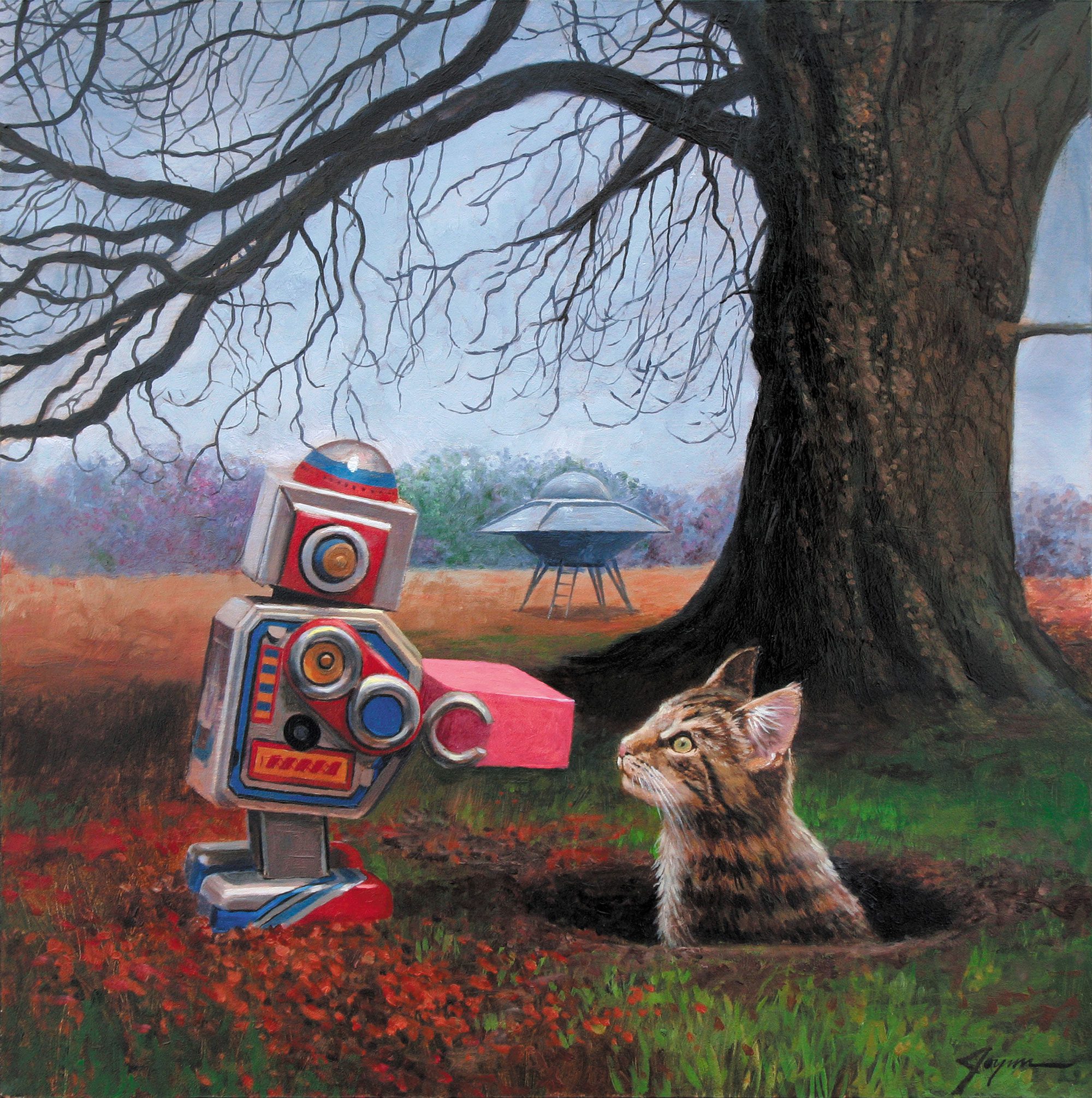
How would you describe your art to a robot? How would you describe your art to a donut?
Haha! I would let my art speak for itself.
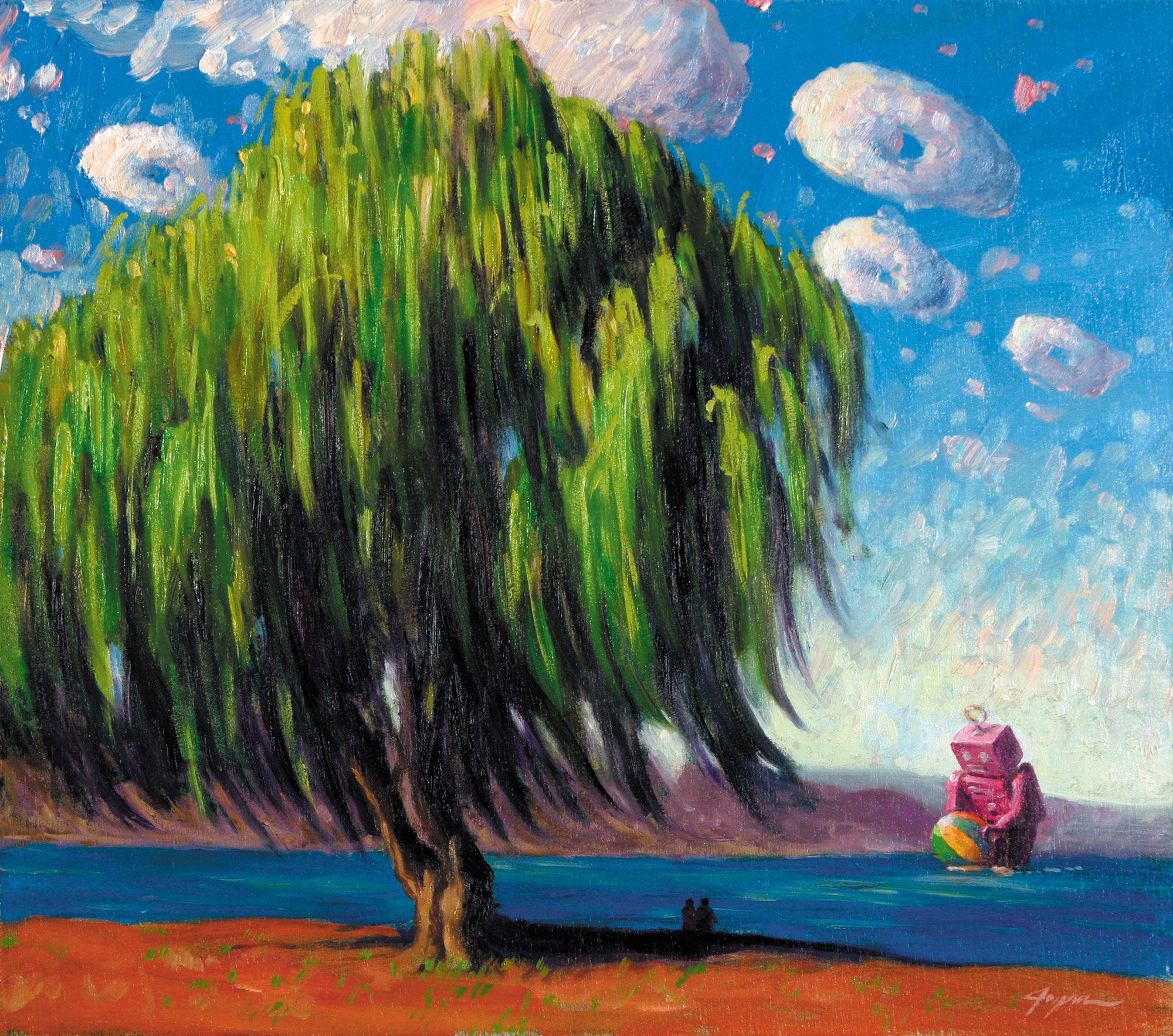
How do you deal with self-doubt as an artist?
I struggle with doubt like a lot of people do but have faith in myself to pull through. Every failure is something new learned, so I keep that in mind. If things get bad, I look at the work of long-dead artists for inspiration and refer to Greek and Roman philosophy.
Biggest way you’ve evolved creatively.
With my thinking. Trusting my thoughts and ideas took many years. Though my painting has changed somewhat over the years, it’s always been rooted in realism.
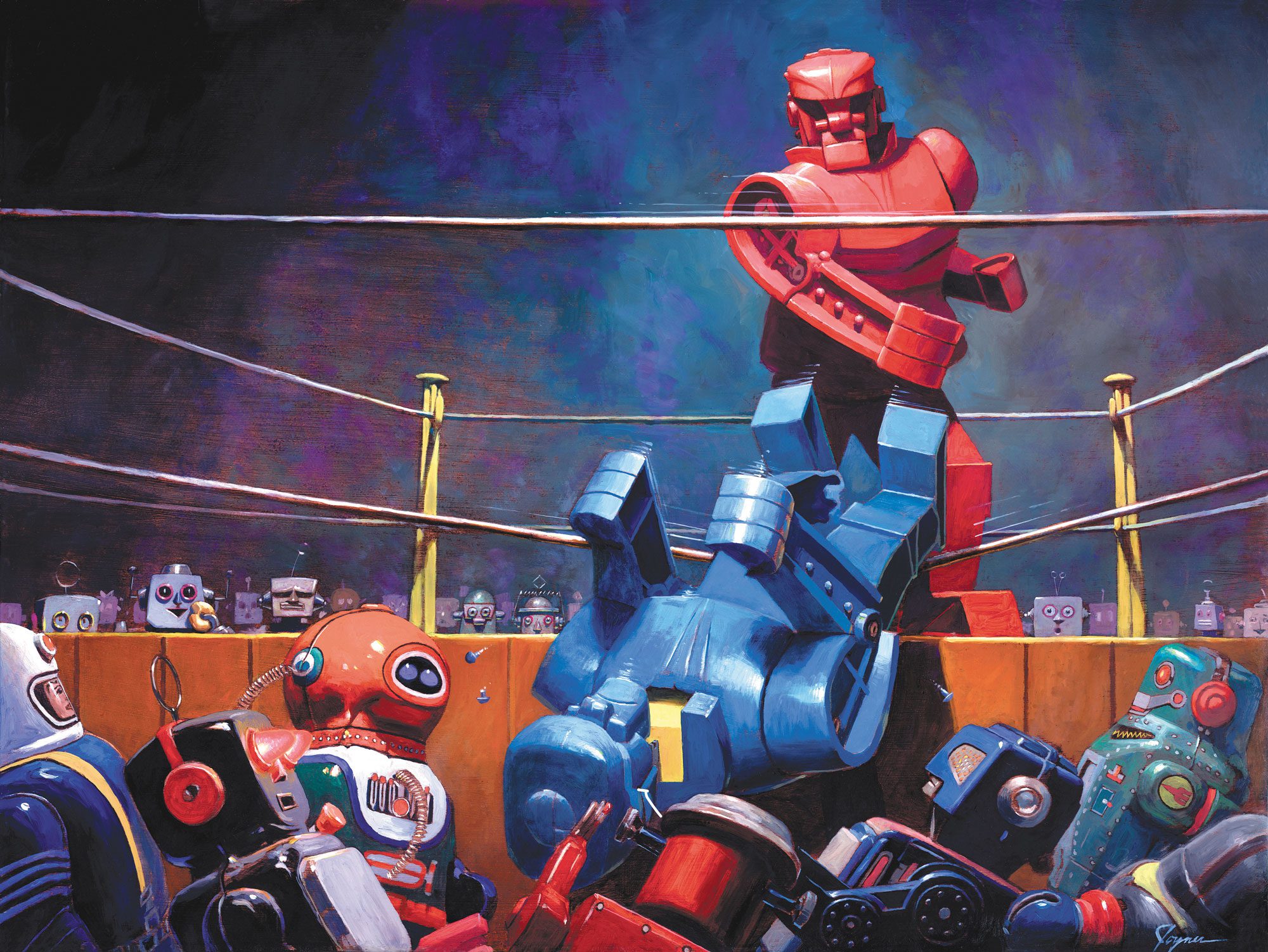
Career highlight(s).
There have been a lot of highlights along the way. The top six would have to be:
- The time in 2004 when my painting “The Final Blow” was selected for the cover of an international art contest Spectrum 11: The Best in Contemporary Fantastic Art in 2004.
- The Sanrio 50th Anniversary Show.
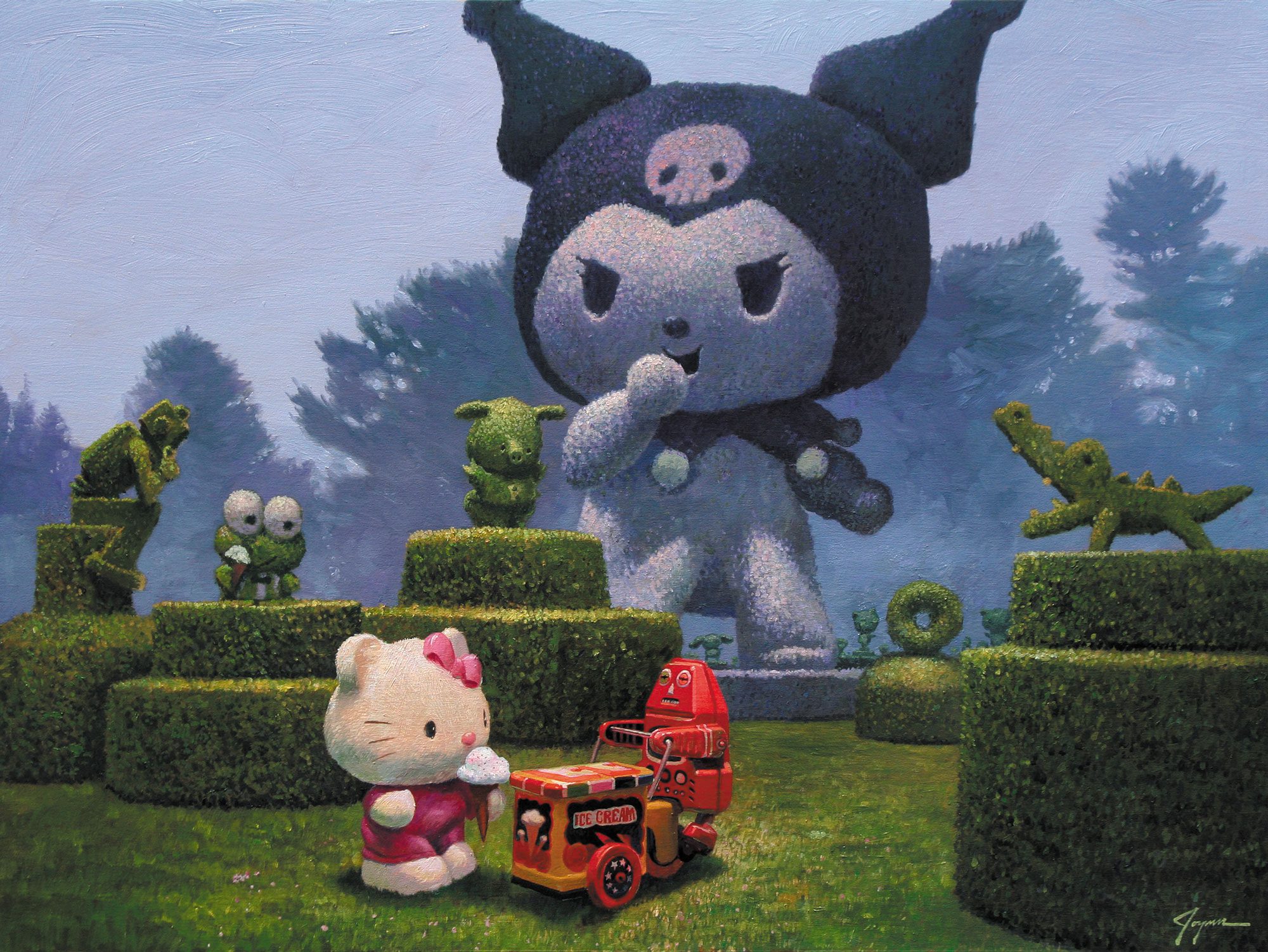
- The Ben Folds Five album cover in 2013.
- A show in Moscow Russia in 2014 and a project with Solo Contemporary in Madrid.
- The cumulative effect of 19.5 years of exhibiting at the Corey Helford Gallery.
- The Lucas Museum of Narrative Art collecting my work. The $1.2 billion museum opening reception is in 2026.
Anything on the horizon this year?
I’m having a solo exhibit — Looking Sideways — in Los Angeles at the Corey Helford Gallery July 19th-August 23rd.
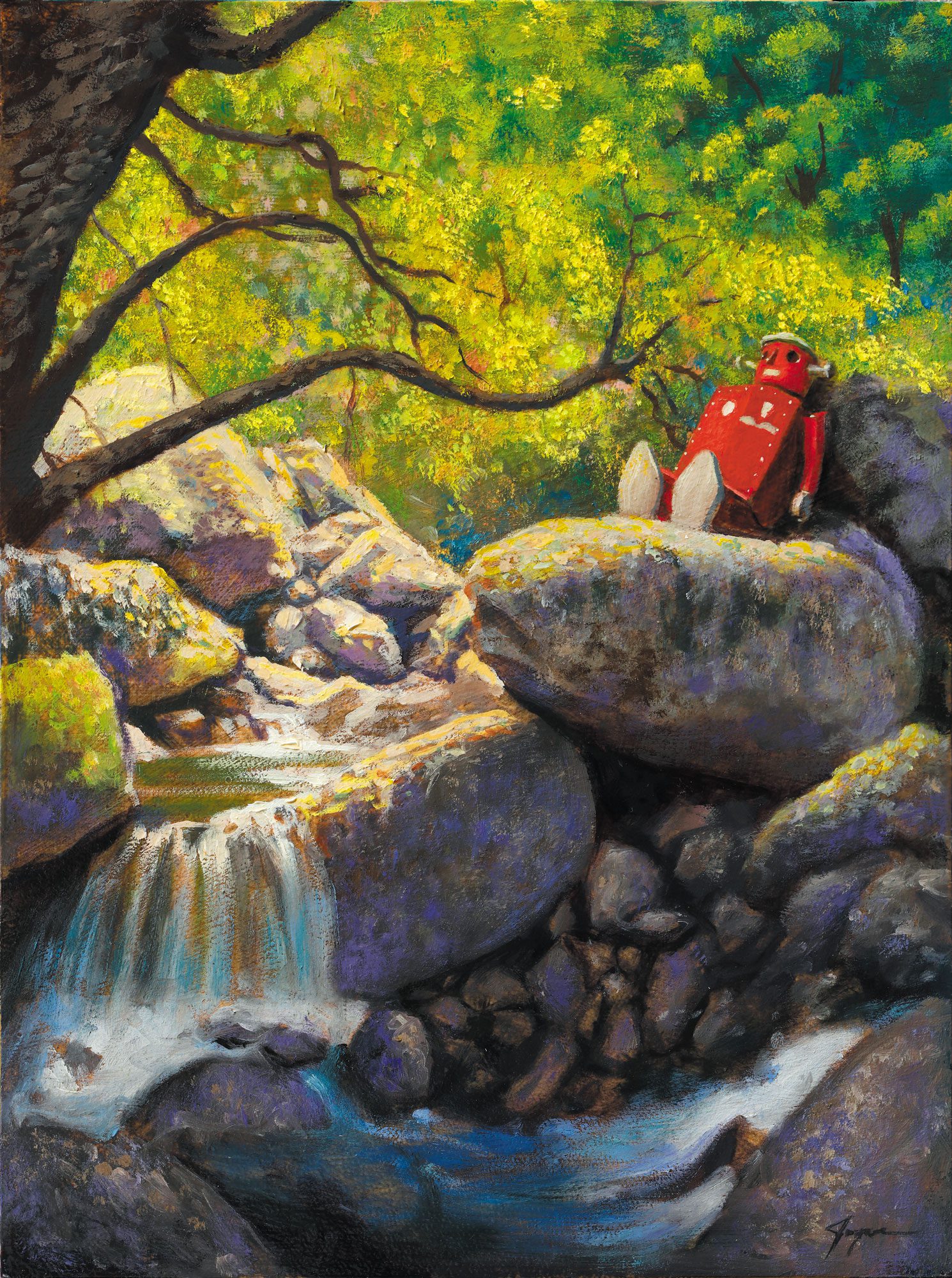
See more of Eric’s work, snag limited prints and merch on his Website. Follow him on Instagram and Facebook. Learn more about his exhibition “Looking Sideways” at the Corey Helford Gallery.
Check out Eric’s last Birdy contribution, Attack of the 300 ft. Barbie, the companion art to Brian Polk’s, Never Ahead, Never Behind, Never Said, Never Mind, in case you missed it. Head to our Explore section to see past installs and covers by this talented artist.
